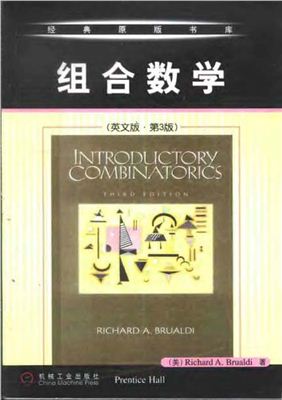Prentice Hall, 1998. - 614 pages.
Introductory Combinatorics emphasizes combinatorial ideas, including the pigeon-hole principle, counting techniques, permutations and combinations, Polya counting, binomial coefficients, inclusion-exclusion principle, generating functions and recurrence relations, and combinatortial structures (matchings, designs, graphs). Written to be entertaining and readable, this book's lively style reflects the author's joy for teaching the subject. It presents an excellent treatment of Polya's Counting Theorem that doesn't assume the student is familiar with group theory. It also includes problems that offer good practice of the principles it presents. The third edition of Introductory Combinatorics has been updated to include new material on partially ordered sets, Dilworth's Theorem, partitions of integers and generating functions. In addition, the chapters on graph theory have been completely revised. A valuable book for any reader interested in leaing more about combinatorics.
Introductory Combinatorics emphasizes combinatorial ideas, including the pigeon-hole principle, counting techniques, permutations and combinations, Polya counting, binomial coefficients, inclusion-exclusion principle, generating functions and recurrence relations, and combinatortial structures (matchings, designs, graphs). Written to be entertaining and readable, this book's lively style reflects the author's joy for teaching the subject. It presents an excellent treatment of Polya's Counting Theorem that doesn't assume the student is familiar with group theory. It also includes problems that offer good practice of the principles it presents. The third edition of Introductory Combinatorics has been updated to include new material on partially ordered sets, Dilworth's Theorem, partitions of integers and generating functions. In addition, the chapters on graph theory have been completely revised. A valuable book for any reader interested in leaing more about combinatorics.

